Aim Training Routine Guide: Master Your FPS Skills Step-by-Step
Updated On: November 12, 2025 by Aaron Connolly
Core Principles of Aim Training Routines
If you want to actually get better at aiming, you have to nail down three things: knowing the different aim types in your favorite games, sticking to a daily practice habit, and setting goals that you can actually track.
Understanding Aim Types
Click-timing aim is all about landing single, perfectly timed shots. CS2 and VALORANT both demand this kind of skill.
You’ll need sharp crosshair placement and tight shot timing. Every bullet matters—spraying randomly just doesn’t cut it.
Tracking aim, on the other hand, means you follow moving targets and keep the trigger down. Apex Legends and Call of Duty are big on this.
Your crosshair has to stick to your enemy as they dart around. Players often call this “magnetic” aim, and honestly, it feels pretty satisfying when you get it right.
Most shooters mix both styles. If you train one, you’ll usually get better at the other because you’re improving mouse control and muscle memory.
Click-timing players who practice tracking get smoother with their crosshair. Tracking fans build faster reactions with click-timing drills.
Habit Formation and Consistency
Daily practice is what wires aiming into your muscle memory. Your brain really needs that repetition to make aiming automatic.
Try to train for 30-60 minutes every day. Short, focused sessions beat those rare marathon weekends.
Use aim training as your warm-up before you jump into ranked matches. It gets your hands ready and puts you in the right mindset.
Set a routine and stick with it for at least three months. It takes time, but being consistent is what makes the difference.
Track your scores every day. Most aim trainers have built-in tools so you can actually see your progress.
Setting Realistic Goals
Focus on accuracy first, not speed. If you rush, you’re just going to build bad habits, and those are a pain to break.
Set weekly goals that make sense for where you’re at. If you’re just starting, maybe aim to bump your accuracy up by 5% a week.
Communities like Voltaic have benchmark systems you can use to measure how you’re doing. They break things down from Bronze all the way to Grandmaster.
Work on your weakest skills first. If your flicks are off, spend more time on flicking scenarios.
Don’t overdo it—if you train more than two hours a day, you’ll just get tired and probably get worse. It’s always about quality, not just grinding hours.
Choosing the Right Aim Trainer Platform
You’ve got three main aim trainers to pick from, and each one fits a different kind of player. AimLab is free and covers the basics, Kovaak’s has a massive scenario library and costs about £8, and Aiming.Pro is browser-based if you like convenience.
AimLab vs Kovaak’s vs Aiming.Pro
AimLab is perfect if you’re new or just want to try aim training without spending anything. It covers basic tracking and clicking for most shooters.
You’ll find official routines for games like Valorant and Apex. The interface is simple and easy to use.
Kovaak’s costs a bit, but you get over 25,000 community-made scenarios. It’s the go-to for anyone who wants to train seriously.
It even lets you match the physics from games like CS and Valorant exactly. Most pros and coaches recommend Kovaak’s for advanced work.
Aiming.Pro runs right in your browser—no downloads needed. It doesn’t have as many scenarios as Kovaak’s, but you get more options than AimLab.
It’s handy if you play on different PCs a lot. The downside? The community’s a bit smaller, so there’s less support and fewer updates.
Essential Features and Customisation
Check for sensitivity settings that match your main FPS games. That way, your muscle memory actually transfers when you play.
Scenario variety matters more than just having tons of scenarios. You want tracking, flicking, and target switching that fit your favorite games.
Progress tracking is key. Good trainers show your accuracy, reaction time, and consistency so you can spot improvement.
Game-specific physics help a lot. If the trainer feels like your main game, your skills carry over better.
It’s great if you can build custom routines for your weak spots. That’s way better than just running random drills.
Platform-Specific Pros and Cons
| Platform | Cost | Best For | Main Drawback |
|---|---|---|---|
| AimLab | Free | Beginners, casual players | Limited advanced scenarios |
| Kovaak’s | £8 | Serious improvement | Learning curve for new users |
| Aiming.Pro | Varies | Browser-based training | Smallest community |
AimLab’s free price tag means anyone can jump in, but it doesn’t have enough depth for long-term growth. Great for basics, not enough for high-level play.
Kovaak’s makes you pay up front, but you get the most complete training setup. The community’s always adding new stuff, so it never feels stale.
Aiming.Pro is super convenient if you switch computers a lot. But the smaller user base means fewer scenario updates and less community help.
Fundamental Aim Techniques
Aiming well comes down to three main skills. You need to master flicking for fast target switches, tracking for moving enemies, and micro-corrections for those tiny aim fixes that make all the difference.
Flicking and Precision Shots
Flicking is about snapping your mouse quickly and accurately onto a target. You’ll need this to hit enemies who pop up out of nowhere or when you’re fighting more than one at a time.
Start your flicks with your shoulder and arm, not just your wrist. The big muscles move you fast, and your wrist fine-tunes the aim. Lots of folks only use their wrist, but that limits how fast and accurate you can be.
Practice flicking at different ranges and angles. Begin with stationary targets, then try moving ones. Building muscle memory takes lots of repetition.
Quick tip: Do 10 minutes of static clicking before you jump into your main game. It’s a simple warm-up that actually helps your first matches.
Watch out for these flicking mistakes:
- Overshooting your targets all the time
- Gripping your mouse too tightly when you flick
- Shooting before your crosshair has settled
Tracking and Following Targets
Tracking means you keep your crosshair on a moving target smoothly. Unlike flicking, you need steady hand control, not big, quick movements.
You’ll need to predict where the enemy’s going while keeping your crosshair on them. This is huge in games like Apex or Overwatch.
Start slow. Track slow-moving targets, then work up to faster ones. Focus on keeping your crosshair the same distance from the target, not just catching up after you fall behind.
Your mouse sensitivity really matters here. Lower sensitivity usually helps with smoother tracking, but you’ll need to move your arm more. Find a setting that feels comfortable for wide movements.
Practice both horizontal and vertical tracking. Most people get good at side-to-side but struggle with up-and-down.
Micro-Corrections Explained
Micro-corrections are those tiny movements you make to keep your aim perfect. The best players do this almost automatically.
You’ll build most micro-corrections through muscle memory, but paying attention to them can help you get better, faster. Notice how your hand fixes little mistakes as you aim.
You’ll use micro-corrections differently depending on the situation:
- For static aiming, small wrist moves help counter hand tremors.
- When you counter-strafe, you adjust for movement drift.
- For recoil control, you make tiny fixes as you spray.
Don’t overdo it. If you’re always correcting, your aim will get shaky. Trust your first movement and only tweak if you really need to.
Practice micro-corrections slowly at first. Use aim trainers that focus on precision, then speed up as you get more accurate.
Crafting Your Personalised Aim Training Routine
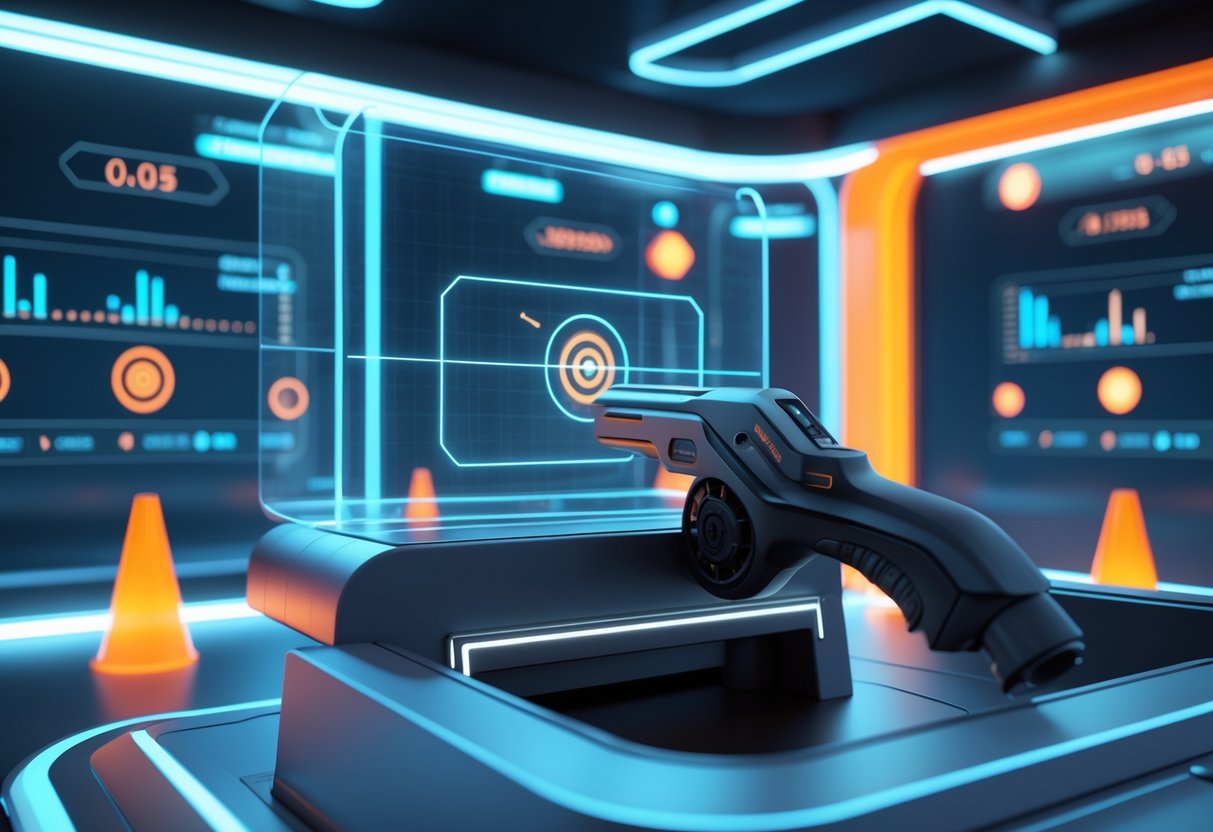
A good aim routine starts with being honest about your strengths and weaknesses. The trick is to target what you’re bad at while keeping daily practice doable for your schedule.
Identifying Your Weaknesses
Before you jump into any aim training plan, figure out exactly where your aim falls apart. This way, you’re not wasting time on stuff you already do well.
Start with benchmark scenarios in your aim trainer. Kovaak’s and Aim Lab both have standard tests that show how you stack up in different skills.
Focus on these areas:
- Flicking accuracy (for fast target switches)
- Tracking consistency (following moving targets)
- Reaction time for sudden enemies
- Precision on tiny targets
Track your scores for a week. Notice which drills you keep scoring low on.
Pay attention to how you play in real matches too. Do you lose long-range fights? Miss strafing enemies? Sometimes, in-game issues show weaknesses that aim trainers miss.
A lot of players find they’re solid at static flicking but can’t handle targets that change direction. Others do fine up close but struggle at a distance.
Routine Structure and Duration
Build your routine around a framework that balances skill-building with your actual life. Sessions around 30-45 minutes seem to work best—any longer, and you’ll just burn out.
Here’s one way to break it up:
- Warm-up (5-10 min): Easy drills to wake up your hands
- Weakness focus (15-20 min): Go hard on your problem areas
- Strength maintenance (10-15 min): Keep your best skills sharp
- Cool-down (5 min): Light drills to end on a good note
Start your weakness work slow and focus on accuracy. Gradually speed up, but don’t sacrifice precision. Going too fast too soon just builds sloppy habits.
Don’t train hard for more than 45 minutes. Your brain and hands need time to rest and absorb what you’ve learned. If you push longer, you’ll probably get frustrated and play worse.
Try to train right before your main gaming session. That way, your aim is fresh when you jump into matches.
Integrating Variety
To keep improving, you need to mix up your scenarios regularly. Muscle memory builds faster when you challenge yourself with different movements and targets.
Try a weekly rotation like this:
- Monday/Wednesday/Friday: Core weakness drills
- Tuesday/Thursday: Different drills for the same skills
- Weekend: Scenarios that match your main game
Swap out scenario variations every couple of weeks. If you’re working on tracking with “Close Long Strafes,” try “Thin Gauntlet” or “Air” next for a different challenge.
Mix in both your main game’s style and the opposite. VALORANT players can learn a lot from tracking practice, and Overwatch players get sharper with click-timing. Cross-training like this boosts your overall mouse control.
Here’s a quick win: Use playlists from communities like Voltaic or Aimer7. They rotate drills for you, so you don’t have to think about it.
Check your progress every month. If you’re getting better at something, just maintain it. If a weakness sticks around, give it more focus.
Scenario Selection for Maximum Improvement

Picking the right scenarios is what actually makes your practice count. Smart scenario selection targets your weaknesses and builds core skills that carry over to your main games.
Best Scenarios for Beginners
If you’re just starting out, it’s best to focus on fundamental mechanics before trying anything complicated. Begin with static target scenarios to build up your basic mouse control.
You can’t go wrong with 1wall 6targets small if you’re playing games like VALORANT or CS2. This scenario helps you nail flicking technique and target acquisition, all without the chaos of moving patterns.
For tracking-heavy games like Apex Legends, try close long strafes invincible. Here, targets move in a predictable way, so you can really dial in your crosshair placement instead of constantly reacting to wild movements.
Essential beginner scenario types:
- Static clicking (1wall variants)
- Basic tracking (long strafes)
- Simple switching tasks
- Slow-moving targets
AimLab has some great beginner-friendly versions of these. Gridshot and Microshot offer similar benefits to Kovaak’s classics, but with visuals that make it easier for new folks to follow along.
Stick with these basics for about 2–3 weeks. Wait until your accuracy stays above 85% before you move on to more advanced stuff.
Advanced Routine Scenarios
If you’ve got some experience, you need scenarios that push several skills at once. Advanced routines mix speed, precision, and tricky movement patterns.
Try target switching scenarios like 1wall 5targets_pasu. These force you to make quick decisions while flexing your mechanics. It’s pretty close to what happens in real matches when you’re dealing with multiple threats.
Give reactive tracking scenarios like thin gauntlet a go. You’ll have to hold your aim steady against unpredictable movement and tiny hitboxes—sounds tough, but it’s great prep for intense in-game fights.
Advanced scenario categories:
- Multi-target switching
- Reactive/evasive tracking
- Small target precision
- High-speed flicking
Mix up your routine each week to stay sharp. Maybe focus on tracking Monday, clicking Wednesday, and target switching Friday.
It’s smart to use game-specific scenarios too. Overwatch and CS2 have very different mechanics, so pick routines that match your main game’s weapons and movement.
Game-Specific Training Advice
Every game asks for something a bit different, so your aim training should line up with what you actually play. VALORANT needs sharp flicks and tight crosshair placement, while Fortnite’s all about smooth tracking during build fights.
Routines for VALORANT Players
VALORANT is more about precision than speed. Crosshair placement matters way more than wild flicks.
Kick off with static clicking drills. These help you build the muscle memory for those satisfying one-tap headshots. Spend time on small flick shots—most VALORANT kills happen right near your crosshair.
Essential daily routine:
- 10 minutes crosshair placement (keep it head level)
- 5 minutes small flick training
- 5 minutes counter-strafing practice
Work on angles and pre-aiming. If you keep your crosshair in the right spot before peeking, you barely have to adjust mid-fight.
Movement and shooting drills are a must. Practice stopping fast before firing, since most misses in VALORANT come from shooting while moving.
Pick scenarios that copy common VALORANT situations. Practice holding angles, clearing corners, and retaking sites. These routines fit real matches better than just clicking random dots.
Tips for Fortnite Practice
Fortnite is a different beast—smooth tracking is everything, not just clicking. Building and editing while aiming adds a whole new layer.
Focus on tracking drills first. Aim to follow moving targets smoothly. Fortnite fights are all about movement, jumping, and building chaos.
Key training areas:
- Smooth tracking (horizontal and vertical)
- Target switching between multiple enemies
- Aiming while moving and jumping
Give extra time to build fight scenarios. Practice aiming up and down, since Fortnite’s got way more vertical action than most shooters.
Shotgun flicking is huge. Work on large, fast flicks—shotgun fights get wild and close.
Edit plays require you to build and shoot fast. Practice quick edits followed by instant shots. That timing can make or break your competitive matches.
Train at different distances. Fights happen from 5 to 200 metres. Your tracking needs to hold up at every range, not just close up.
Transferring Skills to Other FPS Games
You can carry core aiming skills between most shooters. Tracking, flicking, and switching targets all transfer.
Keep your sensitivity consistent across games if you can. That way, your muscle memory doesn’t get confused.
Different genres focus on different things:
- Tactical shooters (CS2, VALORANT): Crosshair placement and micro-adjustments
- Battle royales (Fortnite, Apex): Tracking and long-range shots
- Arena shooters (Overwatch): Fast switching and predicting projectiles
Fundamentals like smooth mouse control, a good grip, and proper posture help everywhere. These basics support all your other skills.
Try this: Warm up with general aim training, then switch to game-specific drills. That builds both your base and your specialty.
If you want a quick win, spend about 70% of your time on fundamentals and 30% on game-specific stuff. That balance keeps your main game sharp and your skills flexible.
Building Muscle Memory and Reaction Time
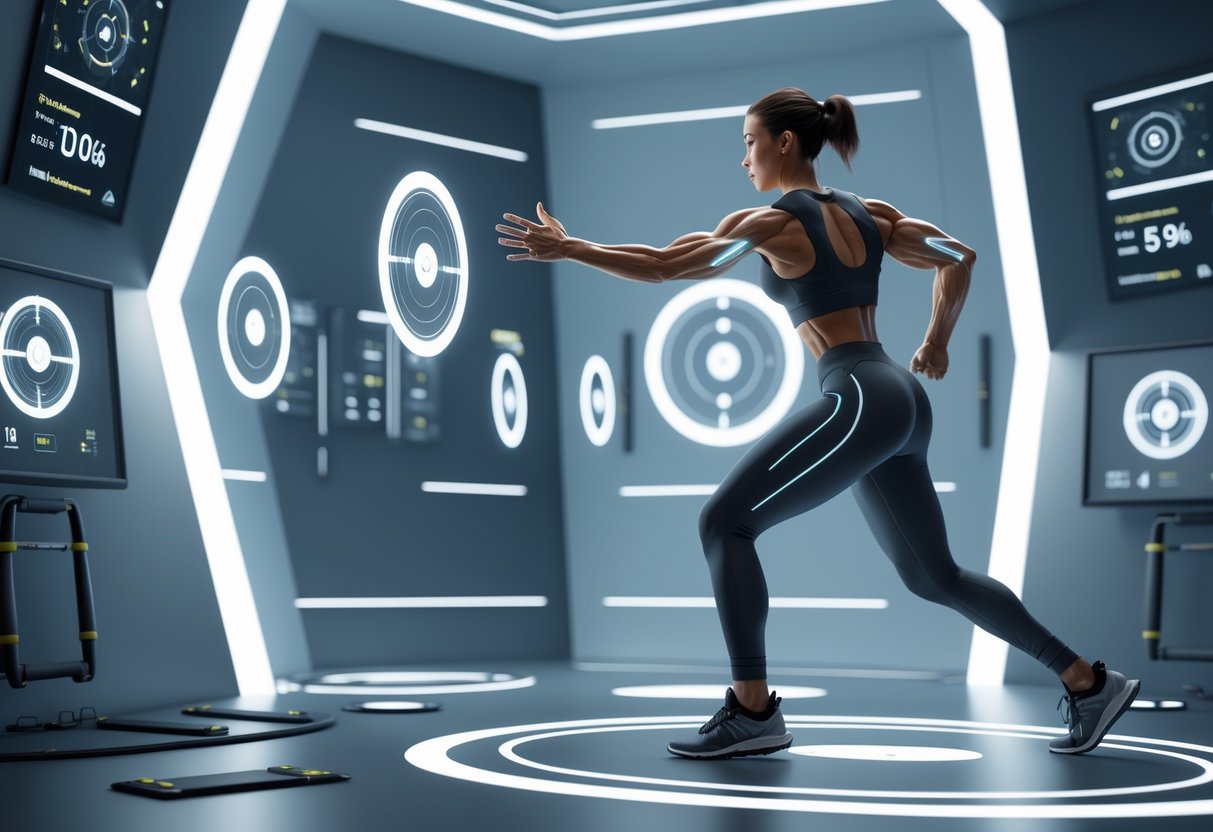
Muscle memory and reaction time are the backbone of competitive aiming. You build these by repeating drills that train your brain to process what you see and move your mouse without thinking too much.
Techniques for Faster Reflexes
Visual Processing Drills train your eyes to spot targets fast. We recommend starting with detection scenarios where targets pop up in random spots. Try to hit each one within 200–300 milliseconds.
Aim for smooth mouse movements instead of jerky corrections. Lots of players rush their first shot and then over-correct. Instead, practice steady movements that get quicker with time.
Pre-aim positioning shortens the distance your crosshair has to travel. Keep your crosshair at head level and near common angles. Just doing this can shave 50–100 milliseconds off your reaction time.
Audio cues can give you a real edge. Use drills that mix sound and visuals. Your brain actually processes sound a bit faster than sight, so you get a tiny head start.
Peripheral vision training helps you catch movement at the edges of your screen. Practice with scenarios where targets appear off-center but you still need to keep your aim on the main target.
Daily Drills for Consistency
Do a morning warm-up for 10–15 minutes before you jump into anything serious. Start with simple target drills, then move to tracking. This wakes up your nervous system and gets you ready to play.
Spend 20 minutes a day on muscle memory drills. Science backs this up—longer sessions usually just tire you out and make your aim worse.
Try evening precision drills when your reflexes slow down a bit. Focus on accuracy, not speed. This builds strong neural pathways for pressure moments.
Track your average reaction times every week with the same scenarios. This helps you see real progress and spot when fatigue hits. Most people see a 10–15% boost in the first month of steady training.
Warm-Up and Cool-Down Strategies
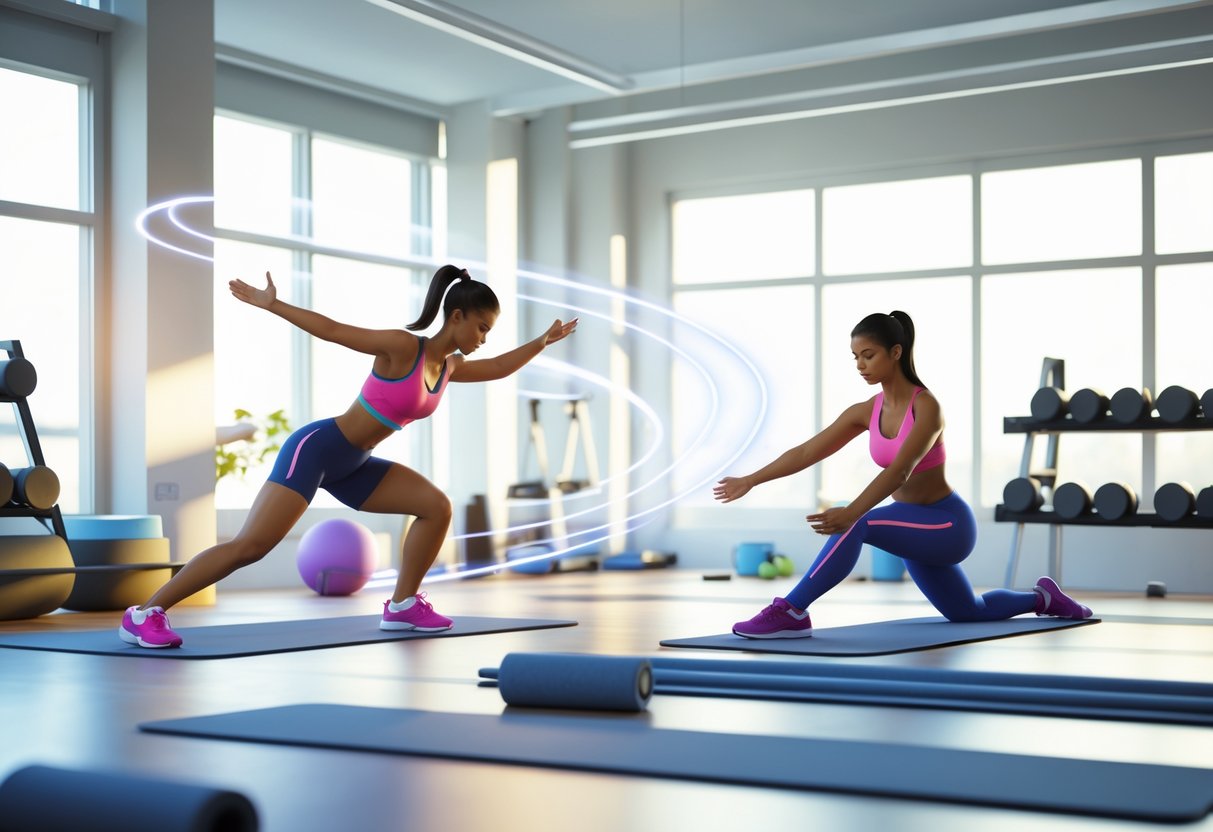
Warming up gets your reflexes and muscle memory ready for tough aim sessions, and cooling down helps you stay consistent day after day. Smart warm-ups target your weak spots before you jump into the hard stuff.
Effective Warm-Up Scenarios
Start every session with 5–10 minutes of basic target practice before you tackle anything advanced. Pro players do this before matches, and it works.
Essential warm-up progression:
- Static dot clicking (30 seconds)
- Small target tracking (1–2 minutes)
- Basic flick shots (2–3 minutes)
- Dynamic target switching (2–3 minutes)
Aim trainers like AimLab have warm-up playlists that ramp up the difficulty bit by bit. “Spidershot” and “Gridshot” are especially good for hand-eye coordination.
AimLab’s recommended warm-up sequence:
- Gridshot Ultimate (precision)
- Microshot (small targets)
- Sixshot (flicking accuracy)
- Motionshot (tracking practice)
General warm-ups usually work better than focused ones when you’re new. Covering several aim styles helps more than drilling just one.
Quick tip: Set your warm-up sensitivity to match your main game exactly. Switching settings mid-practice just confuses your muscle memory.
Avoiding Common Warm-Up Mistakes
Don’t jump right into hard scenarios without warming up. We’ve all seen beginners go for advanced tracking when they still need to work on basic clicking.
The biggest mistake? Rushing through your warm-up just to get to the “real” practice. Your warm-up performance almost always predicts how the rest of your session will go.
Common warm-up errors:
- Practicing less than 5 minutes
- Using random scenarios with no order
- Ignoring your weak aiming styles
- Training with inconsistent settings
Temperature actually matters. Cold hands slow you down. Spend a couple minutes stretching your hands or holding something warm before you start.
If you play Valorant, focus on precise clicking in warm-ups instead of fast tracking. Match your practice to your game.
Cool-down benefits:
- Less hand strain and fatigue
- Better memory of what you learned
- More consistent results over time
End each session with 3–5 minutes of easy, relaxed movements. This helps your nervous system cement the patterns you just worked on.
Tracking and Measuring Your Progress
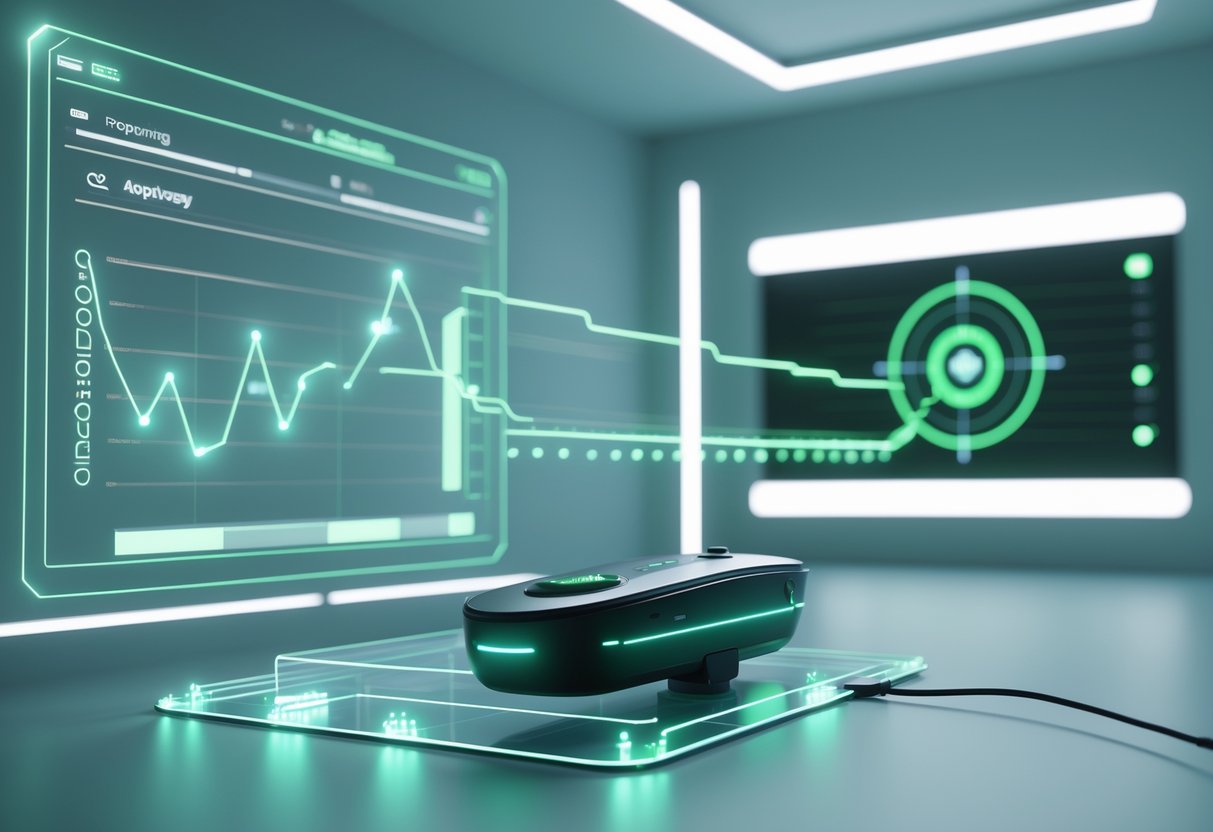
You can’t really improve your aim if you don’t track your progress. Set some benchmarks and use personal data to spot where you need work.
Using Benchmarks and Scoreboards
Most aim trainers have built-in scoreboards so you can see how you stack up. Aim Lab and Aiming.Pro show leaderboards for each drill.
Record your starting scores in the key areas:
- Tracking accuracy (keeping your crosshair on moving targets)
- Flick precision (switching quickly between targets)
- Reaction time (how fast you shoot)
Look at percentile rankings, not just raw scores. If you’re in the 70th percentile, you’re ahead of most players. That’s a better way to see progress.
Pros often aim for these benchmarks before calling themselves “above average”:
- 75th percentile in tracking
- 80th percentile in precision
- Under 200ms average reaction times
Check your scores once a week. Progress is slow and steady—daily checks can just get discouraging.
Analysing Personal Results
Your own data tells you more than leaderboards ever will. Track these in a simple spreadsheet or notebook:
Accuracy trends show if you’re getting steadier. Look for slow increases over weeks.
Reaction time patterns help you find your best hours. A lot of players aim better in the morning.
Spot your weak areas by comparing different drills. If your tracking is worse than your flicking, spend more training time there.
Most aim trainers give you automatic progress reports. Aiming.Pro even offers custom feedback based on your stats. Use that to tweak your routine.
Don’t stress about daily ups and downs. Fatigue, stress, even the room temperature can mess with your scores.
Customising Settings for Effortless Performance

Dialing in your sensitivity and visual settings makes a huge difference. The right tweaks can turn clunky aim into smooth, natural movement.
Sensitivity and Field of View
Finding your ideal sensitivity isn’t quick—you’ll need to experiment and see what actually feels right for you. Most pros stick with lower sensitivities than beginners might expect, which can be surprising at first.
Start with your game’s default sensitivity. Lower it by about 10-15% each session.
Test each setting for at least three aim training sessions before you tweak it again. Give yourself time to adjust before making another change.
Mouse sensitivity ranges by game:
- VALORANT: 0.3-0.8 at 800 DPI
- CS2: 1.5-3.0 at 800 DPI
- Apex Legends: 1.0-2.5 at 800 DPI
Your field of view changes how much you actually see on screen. Higher FOV boosts your peripheral vision, but it also shrinks targets.
Most competitive players pick 90-110 FOV in games that let you adjust it. If you go above 110, you’ll probably notice some weird distortion at the edges.
Quick sensitivity test: You should manage a 180-degree turn with one smooth mouse swipe across your pad. If you need a couple swipes or can’t even hit 90 degrees, it’s time to adjust.
Crosshair and Visual Adjustments
Your crosshair needs to pop against every map background, not just the bright ones. Bright colors like cyan, green, or yellow usually work better than red or white.
Keep your crosshair size small enough for precision, but not so tiny you lose track of it. Most pros go for 1-2 pixel thickness, and they skip outlines or keep them minimal.
Essential visual settings:
- Brightness: 110-130% so you can spot enemies hiding in dark corners
- Digital vibrance: 75-100% for more color contrast
- Anti-aliasing: Turn it off for sharper enemy outlines
- Motion blur: Always disable it for better tracking
Test your crosshair on different parts of the map before you settle on settings. What stands out on a bright map might vanish on a darker one.
Turn off visual effects that don’t help you play better. Extra shadows, reflections, and fancy particles just distract you and can slow your frame rate.
Staying Motivated and Avoiding Burnout
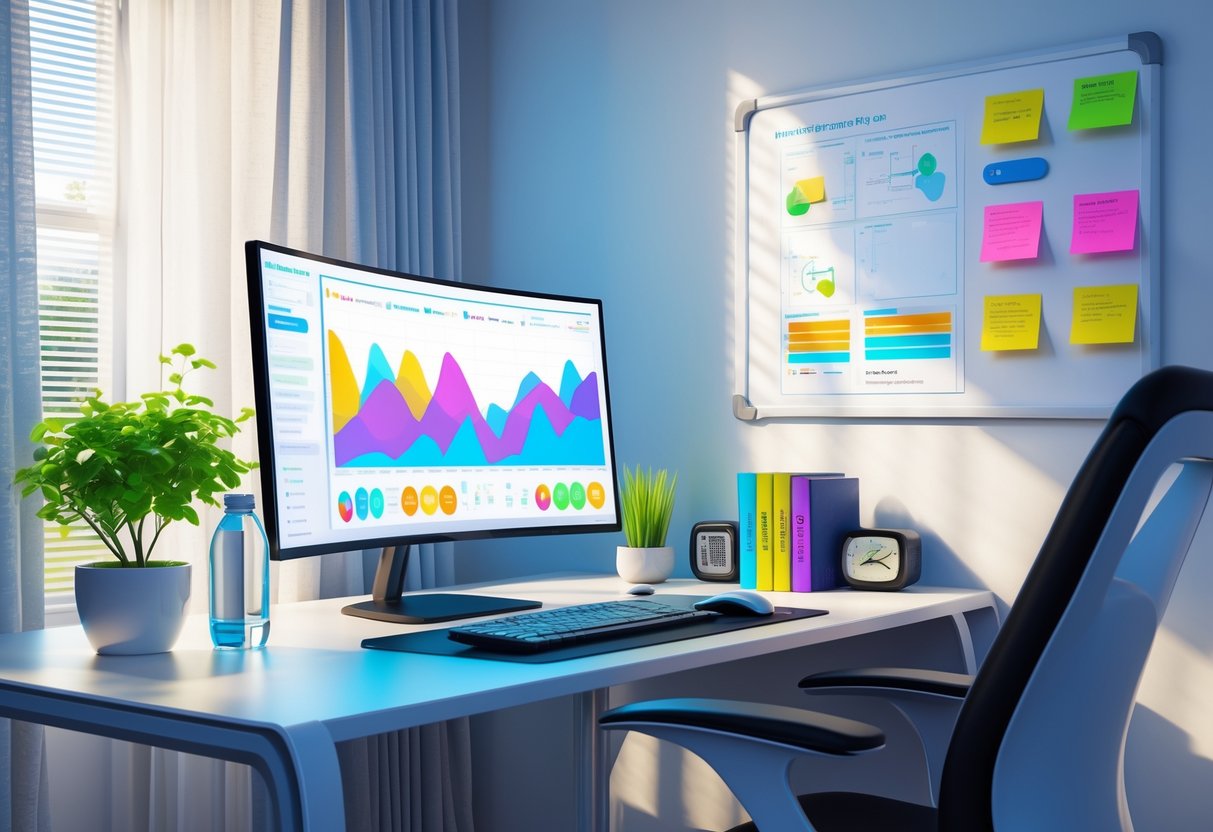
Building up that “human aimbot” accuracy? It takes months of steady, focused practice. Honestly, most people quit before they see real progress.
Set up a reward system and track your small wins. That way, you’ll keep training even when motivation drops.
Maintaining Long-Term Motivation
Aiming skills don’t show up overnight. They develop slowly over weeks—sometimes longer.
Lots of players expect quick results and give up after two weeks.
Track specific metrics instead of relying on gut feelings. Write down your average accuracy in Kovaak’s or Aim Lab every day.
Even a 2% bump over a month means you’re making progress.
Set micro-goals for each session:
- Complete 3 different scenarios without skipping
- Beat yesterday’s score in one drill
- Hold 70%+ accuracy for 10 minutes straight
Switch up your drills to avoid burnout. Rotate between tracking, flicking, and clicking scenarios when you start to get bored.
If you usually train for 30 minutes, try splitting it into two 15-minute sessions. Sometimes, a change in routine helps.
Warning: Skip training if you’re frustrated or exhausted. Bad sessions just build bad muscle memory, and fixing that later is a pain.
Take full rest days every 3-4 days. Your muscle memory actually locks in during breaks, not endless grinding.
Reward Systems for Progress
Small rewards make a big difference when you’re in the grind. Celebrate weekly milestones instead of waiting for some huge breakthrough.
Weekly reward structure:
- Finish 5 training sessions = new mouse pad or game cosmetic
- Beat personal best in 3 scenarios = treat yourself to your favorite takeaway
- Train consistently for 2 weeks = upgrade a piece of gear
Track your progress visually—use a spreadsheet or just a notebook. Watching your scores climb from 65% to 78% in a month feels pretty great.
Accountability partners can help a ton. Share your daily scores with a gaming buddy who’s also training. A bit of friendly rivalry keeps you both on track.
Quick win: Screenshot your best scores every week. Looking back at old results can remind you how far you’ve come, even if progress feels slow day-to-day.
You could also join aim training Discord groups. Sharing progress and celebrating together makes the grind a lot more fun.
Frequently Asked Questions
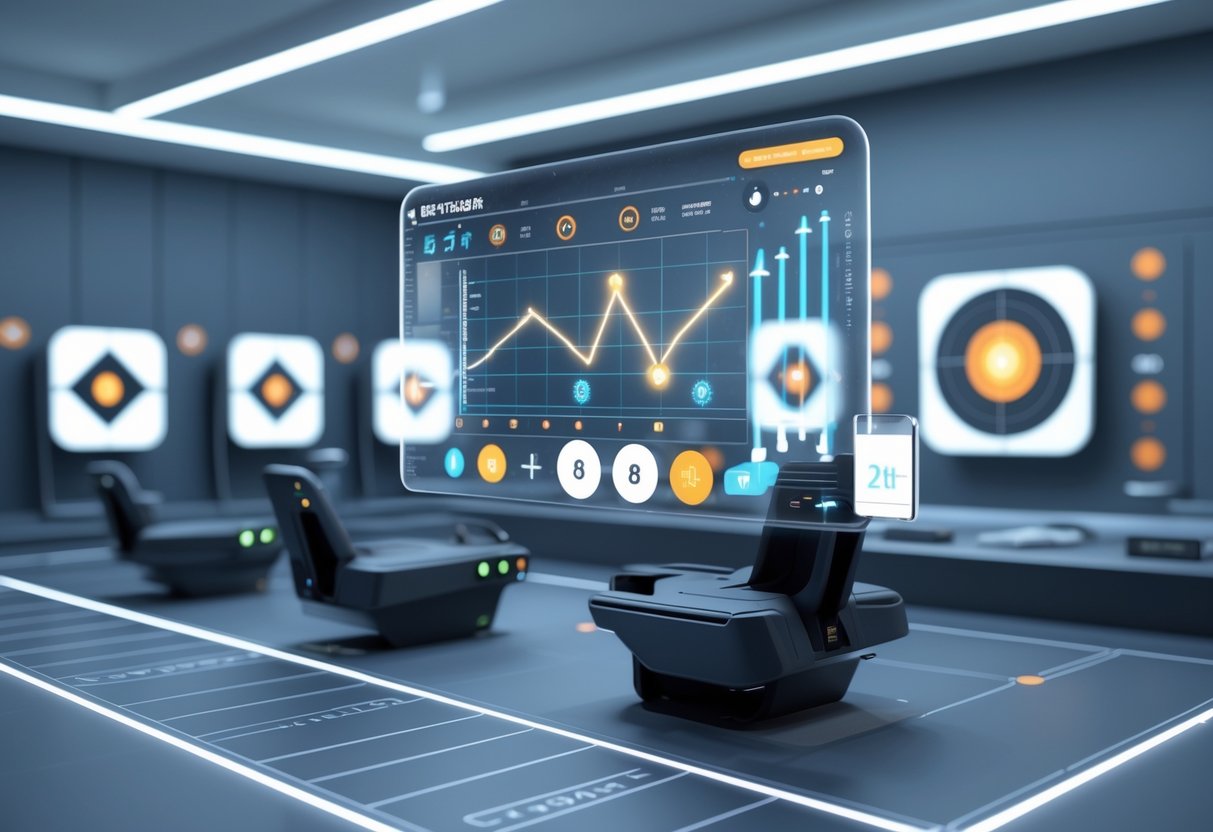
Here are the questions people ask most about building an effective aim training routine. Let’s get into daily practice schedules, measuring progress, and more.
What exercises should I include in my daily aim training routine for tactical shooters?
Focus on click-timing scenarios for tactical shooters like CS and VALORANT. These games reward precise shots with semi-auto weapons.
Start with “1wall 6targets small” in Kovaak’s or similar grid shot drills in Aim Lab. These boost your flick accuracy and target acquisition speed.
Add crosshair placement drills to practice pre-aiming common angles. Spend 10 minutes on “1wall 5targets pasu” to sharpen your timing.
Include strafe aiming exercises. They’ll help you stay accurate while moving, which matters a lot in these games.
If you can, practice counter-strafing scenarios too. This skill helps you stop moving before you shoot in-game.
How long should I spend on aim training each day to see consistent improvement?
Aim for 15-30 minutes of focused practice every day. You’ll see better results with consistency than you would with occasional marathon sessions.
If you’re new, start with 15 minutes. When you get more comfortable and your hand endurance improves, bump it up to 30.
Split your session into three parts: 5-10 minutes warming up, 15-20 minutes on main drills, and 5 minutes cooling down. This keeps fatigue in check.
One hour daily is the max we’d suggest for serious improvement. More than that just leads to burnout or even hand strain.
Try using aim training as your warm-up before playing ranked matches. It blends practice into your regular gaming routine.
Can you recommend any effective drills to enhance flicking and tracking in FPS games?
For flicking, try “Tile Frenzy” in Aim Lab or “1wall 6targets TE” in Kovaak’s. Both will sharpen your muscle memory for snapping to targets.
Practice wide flicks with “Microshot” scenarios. Start slow, then pick up speed as you get the hang of it.
For tracking, use “Centering I” in Aim Lab or “Close Long Strafes Invincible” in Kovaak’s. These help you keep your crosshair on moving targets.
Mix in target switching drills. You’ll need to flick between multiple enemies in real games, so get comfortable with that.
Work on smooth tracking before you move to reactive tracking. Build a solid base with predictable movement, then try more erratic patterns.
What are the best free aim training programs that I can use to improve my aiming skills?
Aim Lab stands out as the most popular free option. You get a huge library of scenarios for tracking, flicking, and target switching—something for everyone.
The program has game-specific playlists for VALORANT, CS, and Apex Legends. These mimic the aiming style of each game.
Aim Lab also gives you detailed performance analytics. You can track accuracy, reaction time, and more.
3D Aim Trainer is a free browser-based alternative. It’s simpler than Aim Lab but still solid for basic practice.
A lot of players eventually buy Kovaak’s FPS Aim Trainer for around £7. It comes with more advanced drills and a big library of community content.
How do I measure my progress with my aim training routine?
Track your accuracy percentage and average reaction time in each drill. Most aim trainers show these stats right after your session.
Write down your high scores in 3-5 key scenarios every week. Look for consistent improvement instead of just celebrating lucky runs.
Use benchmark routines like Voltaic’s ranking system to see how you stack up against others. These tests give you a clear sense of progress.
Watch your in-game stats too. Improvements in kill/death ratio or headshot percentage show your aim training is paying off.
Keep a simple log of your daily scores. A spreadsheet makes it easy to spot trends over time.
Set specific, measurable goals—like “improve grid shot accuracy by 5% this month.” It’s easier to stay focused when you know exactly what you’re working towards.
Are there any community-approved aiming routines that can help me advance in competitive gaming?
Voltaic’s fundamental routines have earned a lot of respect in the competitive scene. They give you clear progression paths for different games and skill levels.
Aimer7 put together a comprehensive guide that’s honestly still the gold standard for learning aim training theory. His routines really push you to get your technique right before you crank up the speed.
The Kovaak’s community keeps making game-specific playlists that match the aiming demands of popular titles. Experienced players update these routines all the time.
Voltaic also has issue-specific routines that go after weaknesses like shaky tracking or unreliable flicks. Try these once you spot your trouble spots through benchmark testing.
You’ll see a lot of pro players sharing their own routines on social media. Still, it’s probably best to stick with tried-and-true community guides at first before you start making your own.
Jump into aim training Discord communities if you want the latest routine updates or advice from trainers who really know their stuff.

